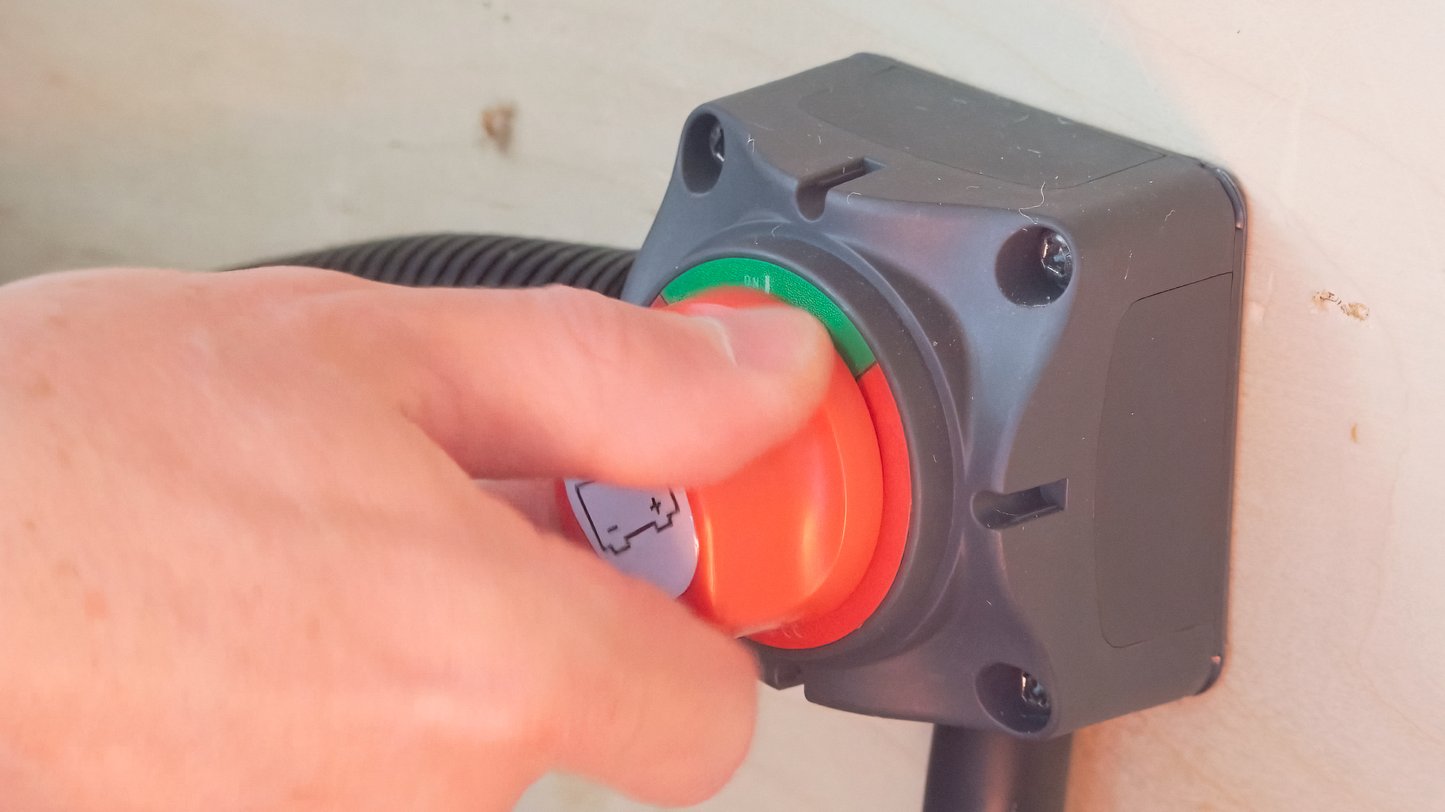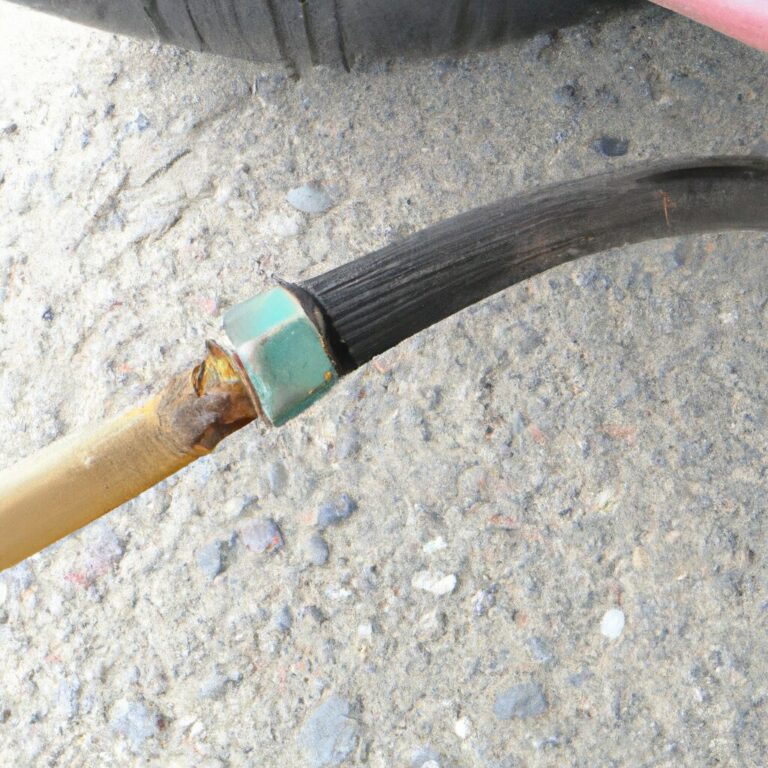How Does Battery Disconnect Switch Work On Rv
When you are ready to head out on your RV adventure, there are a few things you need to do to prepare your vehicle. One of those things is to make sure your battery disconnect switch is in the proper position. This switch is designed to protect your RV battery from being drained while you are away from your rig.
If you own an RV, you may be wondering how the battery disconnect switch works. This switch is designed to protect your RV’s battery from being drained when the RV is not in use. When the switch is turned to the “off” position, it disconnects the battery from the RV’s electrical system.
This prevents the battery from being drained by any electrical components that may be left on, such as the lights or the TV.
To turn the battery disconnect switch back on, simply flip the switch to the “on” position. This will reconnect the battery to the RV’s electrical system, allowing it to power any components that are turned on.
The battery disconnect switch is a simple but important part of owning an RV. By understanding how it works, you can help keep your RV’s battery in good condition and avoid any unnecessary drain.

Credit: www.thervgeeks.com
Should Battery Disconnect be on or off RV?
A battery disconnect switch is a switch that is used to disconnect the battery from the electrical system of a vehicle. This can be used to prevent electrical fires, or to prevent the battery from being drained by electrical devices when the vehicle is not in use. The battery disconnect switch is usually located near the battery, and is often labelled “battery disconnect” or “master switch”.
What does a battery disconnect switch do on an RV?
Most RVs have a battery disconnect switch that is used to disconnect the battery from the RV’s electrical system. This switch is usually located near the battery and is used to prevent the battery from being drained when the RV is not in use.
When the switch is turned to the “off” position, it disconnects the battery from the RV’s electrical system.
This prevents the battery from being drained by any electrical devices that may be left on in the RV. It also prevents the battery from being charged by the RV’s alternator when the RV is not in use.
The battery disconnect switch is an important part of the RV’s electrical system.
It should be used whenever the RV is not in use for extended periods of time. This will help to prolong the life of the battery and prevent it from being damaged by overcharging.
How do battery disconnect switches work?
The battery disconnect switch on an RV is a simple device that is used to disconnect the battery from the electrical system. This switch is usually located near the battery and is used to prevent the battery from being overcharged or damaged by the electrical system. The battery disconnect switch is a simple on/off switch that can be operated by hand or with a key.
When the switch is in the off position, the battery is disconnected from the electrical system and can not be overcharged. When the switch is in the on position, the battery is connected to the electrical system and can be overcharged.
Rv battery disconnect switch on or off when plugged in
If you’ve ever wondered how that little switch next to your RV’s battery disconnects the power, wonder no more! Here’s a quick explanation of how it works.
The battery disconnect switch is a simple but important safety feature on your RV.
When you flip the switch to the “off” position, it physically disconnects the battery from the RV’s electrical system. This prevents any electricity from flowing to or from the battery, which can be dangerous if the battery is damaged or leaking.
The battery disconnect switch is usually located near the RV’s battery, and it’s often labeled so that you can easily find it in an emergency.
It’s a good idea to familiarize yourself with the location of the switch before you hit the road, so that you can quickly turn it off if necessary.
In short, the battery disconnect switch is a vital safety feature on your RV. By flipping it to the “off” position, you can prevent dangerous electrical accidents.
Battery disconnect switch on or off when on shore power
If you’ve ever wondered how that little switch next to your RV’s battery disconnects the power, wonder no more! Here’s a quick rundown on how it works.
When you flip the switch to the “off” position, it physically disconnects the battery from the RV’s electrical system.
This means that no power can flow from the battery to the RV, and vice versa.
There are a few reasons why you might want to do this. For one, it can help prevent accidental discharge of the battery while you’re not using the RV.
It can also help prolong the life of your battery by preventing it from being overcharged by the RV’s electrical system.
So, there you have it! Now you know how that battery disconnect switch works on your RV.
Rv battery disconnect switch wiring diagram
If you’ve ever wondered how that little switch next to your RV’s battery disconnects the battery, wonder no more! Here’s a quick explanation of how it works.
When you flip the switch to the “off” position, it actually disconnects the battery from the RV’s electrical system.
This means that no power can flow from the battery to the RV’s electrical components.
The battery disconnect switch is a vital part of the RV’s electrical system. It helps to protect the battery from being drained accidentally, and it also helps to prevent any fires that could start if the battery were to become overloaded.
So, there you have it! That’s how the battery disconnect switch works on an RV. I hope this quick explanation has been helpful.
Rv battery disconnect switch problems
If you’ve ever wondered how that little switch next to your RV’s battery disconnects the power, here’s a quick explanation. The battery disconnect switch is usually located near the RV’s battery, and it does exactly what its name suggests – it disconnects the battery from the RV’s electrical system.
This is a very important safety feature, because it prevents the battery from being accidentally discharged while the RV is in storage.
It’s also a good idea to disconnect the battery if you’re going to be away from the RV for an extended period of time, just to be safe.
To use the battery disconnect switch, simply turn it to the “off” position. This will break the connection between the battery and the RV’s electrical system, and the power will be cut off.
When you’re ready to reconnect the battery, just turn the switch back to the “on” position and you’ll be good to go.
Keystone rv battery disconnect switch
If you own an RV, you may have noticed a battery disconnect switch. This switch is designed to protect your RV’s batteries from being discharged when not in use. Here’s how it works:
When you’re not using your RV, you can flip the switch to “disconnect” the batteries. This will prevent any power from being drawn from the batteries, preserving their charge. When you’re ready to use your RV again, simply flip the switch back to the “connect” position and your batteries will be available for use.
The battery disconnect switch is a great way to protect your RV’s batteries and ensure that they have a long life. If you have any questions about how it works, be sure to consult your RV’s owner’s manual.
Rv battery disconnect switch push pull
If you’ve ever wondered how that little switch next to your RV’s battery disconnect works, wonder no more! This switch is designed to cut power to the RV’s 12-volt system when the RV is not in use. This prevents your battery from being drained and keeps it fresh for your next adventure.
To use the switch, simply flip it to the “off” position when you’re done using your RV. When you’re ready to hit the road again, just flip it back to the “on” position and you’re good to go. It’s really that simple!
So, there you have it. Now you know how that battery disconnect switch works on your RV. Be sure to use it whenever your RV is not in use to keep your battery in tip-top shape.
Rv battery disconnect relay
If you’ve ever wondered how that little switch next to your RV’s battery functions, wonder no more! Here’s a quick rundown on how a battery disconnect switch works and what it does.
When you first hook up your RV to shore power, the battery disconnect switch is automatically turned on.
This allows your RV’s battery to charge while you’re plugged in. Once the battery is fully charged, the switch will automatically turn off, disconnecting the battery from the charging source.
If you’re not plugged into shore power, the battery disconnect switch will need to be manually turned on in order to charge the battery.
Once the battery is fully charged, you can turn the switch off again to conserve power.
The battery disconnect switch is a great way to prolong the life of your RV battery. By disconnecting it from the charging source when it’s not in use, you can prevent it from overcharging and reduce the risk of damage.
Best rv battery disconnect switch
RV battery disconnect switches are designed to protect your RV’s electrical system from damage caused by short circuits or overcharging. They work by disconnecting the battery from the electrical system when the RV is not in use, and reconnecting it when the RV is ready to be used again.
Most RV battery disconnect switches are located near the RV’s main battery, and are usually clearly labeled.
To use the switch, simply turn it to the “off” position when you’re not using your RV, and turn it back to the “on” position when you’re ready to use it again.
RV battery disconnect switches are a simple and effective way to protect your RV’s electrical system. Be sure to use one whenever your RV is not in use, and you’ll be able to enjoy your RV worry-free for many years to come.
Conclusion
A battery disconnect switch is used to disconnect the battery from the RV. This is usually done when the RV is not in use, or when the battery needs to be replaced. The battery disconnect switch is located on the outside of the RV, near the battery.
To disconnect the battery, simply turn the switch to the “off” position.

